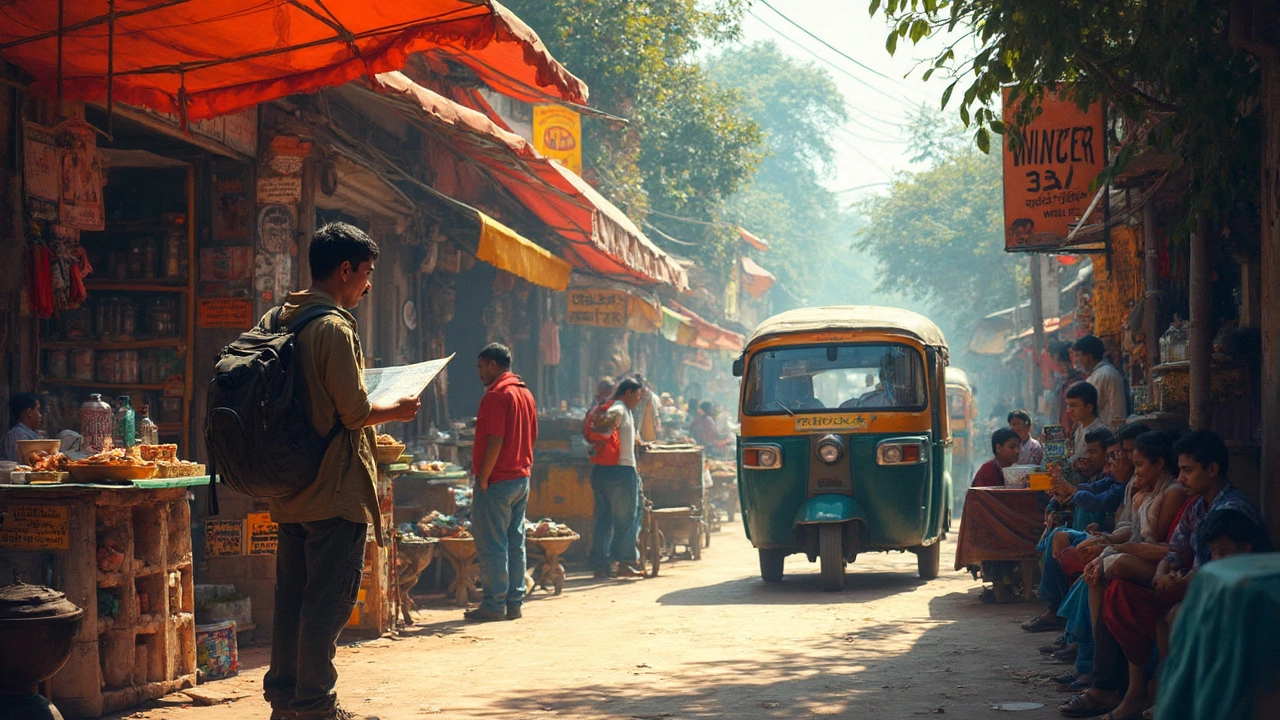SEARCH
Travel India on $20 a Day: Real‑World Tips and Hacks
If you think India is out of reach because of money, think again. With $20 (≈₹1,650) you can cover food, transport, a simple hostel and still see a few cool spots. The secret is to mix local ways of moving, street eats and free attractions. Below you’ll find a step‑by‑step plan that works in most towns from Delhi to Kerala.
Where Your Money Goes: Smart Allocation
Break $20 into three buckets: Food (₹700), Travel (₹500) and Sleep (₹400‑₹500). The remaining ₹50 can be saved for a small entry fee or water bottle. This split keeps you from overspending on any one area and makes budgeting easy.
Food: Street stalls, local dhabas and small canteens serve a plate of dal‑rice, a masala dosa or a handful of samosas for under ₹70. A simple breakfast of upma or poha costs ₹30‑₹40. Stick to water from filtered dispensers (₹10‑₹15 for a litre) and you’ll stay hydrated without splurging on bottled brands.
Travel: Use state buses, shared auto‑rickshaws or the extensive train network. A short metro ride in Delhi or a local train in Mumbai is ₹15‑₹30. For inter‑city hops, book second‑class tickets on the Indian Railways – a 3‑hour journey between nearby cities can be as low as ₹150.
Sleep: Hostels, guesthouses and dorm rooms in the $5‑$7 range are everywhere in tourist hotspots. In smaller towns you can find rooms for ₹300‑₹400 that include a fan and basic linens. Always check recent reviews on platforms like Hostelworld or local Facebook groups for cleanliness tips.
Free and Low‑Cost Experiences You Can’t Miss
India’s culture is generous with free sights. Most temples, markets and public parks have no entry fee. In Delhi, stroll through India Gate or the bustling lanes of Chandni Chowk. In Kerala, wander the backwaters of Alappuzha on a shared boat for ₹70‑₹100 per hour – a tiny expense for an unforgettable view.
Plan one “free day” each week where you explore walking tours, open‑air museums or local festivals. These events often showcase music, dance and street food at no cost, letting you soak up the vibe while keeping your budget intact.
When you need to stretch a bit more, look for night bazaars or evening train tickets. Many trains offer a discounted “senior” or “student” fare if you’re traveling with a valid ID, shaving off up to 20% of the price.
Finally, buy a cheap SIM card (₹150) with data. Having internet on hand helps you locate the nearest cheap eats, last‑minute hostel deals and real‑time bus schedules – all essential for staying under $20.
Bottom line: $20 a day isn’t a fantasy, it’s a disciplined approach. Focus on local transport, street food and free cultural spots, and you’ll experience India’s diversity without breaking the bank. Pack a reusable water bottle, embrace the crowd, and let the country’s hospitality surprise you every step of the way.

How Far Does $20 Go in India? Budget Travel Tips You Need to Know
Curious what you can get for $20 in India? This guide breaks down exactly how far twenty bucks will take you across daily travel, food, and experiences. Pocket-friendly tips, real prices, and ideas for making the most of a tight budget while traveling around India. No fluff—just straight-up advice and practical info for budget travelers. Find out how to stretch your dollar and have an authentic Indian adventure.
Continue reading